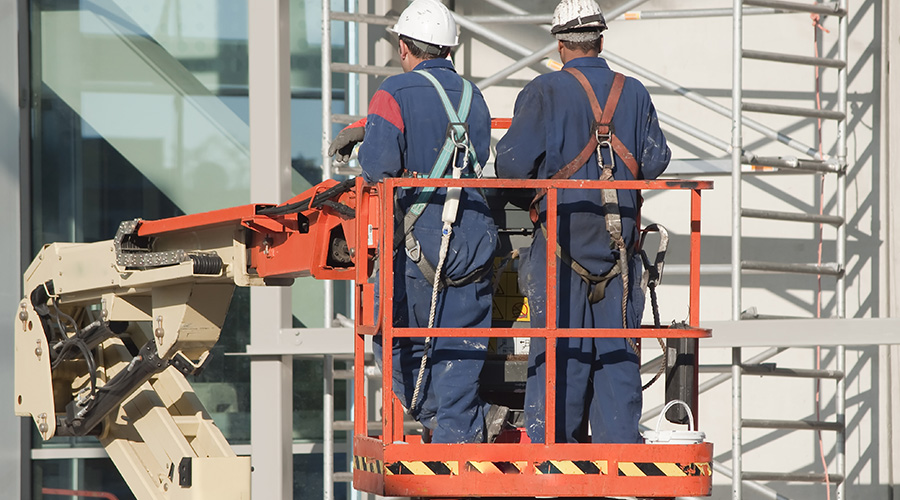Don't Let H1N1 Disrupt Business Operations This Flu Season
Did the relatively quiet summer lull you into thinking H1N1 isn’t a serious threat? By early fall, evidence that suggests you reconsider was already mounting.
Exhibit A: On Aug. 25, an advisory group called the President’s Council of Advisors on Science and Technology released a report on the H1N1 flu. If the worst-case scenario in the report occurred, between 30 and 50 percent of the population would become infected during the fall and winter, leading to as many as 90,000 deaths. Though H1N1 influenza isn’t likely to strike with such severity, facility executives should at least be aware of the risk for planning purposes.
Exhibit B: Days after that report was released and students returned to campus at Washington State University, health officials announced that they had treated 2,500 students for flu-like symptoms. Though no students required hospitalization, the outbreak quickly surged to infect more than 10 percent of students. Ordinarily, only a handful of students would be infected with the flu so soon.
Exhibit C: Returning to Washington, D.C., on Sept. 1 from vacation after a month when his signature campaign issue — health insurance reform — really heated up, President Barack Obama’s sole public event was dedicated to urging the nation to get vaccinated for H1N1, a sign of just how disruptive the administration believes H1N1 could become.
“There are deaths still happening, and people are still getting sick,” says David Casavant, executive director of the Workplace Safety Awareness Council. “In day-to-day operations, I just don’t see quite as much concern as you would think there would be.”
Now, on the brink of the flu season, it’s crucial for facility executives to prepare for H1N1. Even though the summer seemed quiet, the Centers for Disease Control (CDC) estimates that more than 1 million people became sick with H1N1 in the U.S. between April and June alone. Since the outbreak began, 593 people in the U.S. died and 9,079 people were hospitalized. And heading into fall the H1N1 outbreak is likely to worsen because, as Casavant explains, the warm summer months made it more difficult for the virus to grow and spread.
The World Health Organization is bracing for a broader outbreak. The agency upgraded its alert level to Phase 6 on June 11. That means that sustained human-to-human transmission of a new flu virus is occurring, the world’s first pandemic in 41 years.
“This is the time of year when the flu becomes active,” says Lisa Koonin, senior advisor for H1N1 influenza response at CDC. “We are likely going to see a lot of flu this fall.”
Swine Flu or H1N1?
The first thing to keep in mind about H1N1 is that it isn’t Swine Flu, even though it sometimes is referred to that way.
“When this virus first emerged in the spring, we recognized it was a brand new virus we had never seen before,” says Koonin. “It’s two parts swine flu, one part bird flu and one part human flu mixed together in one virus.”
This has important implications. Because the virus is unlike existing seasonal flu, current flu vaccines won’t work. A new vaccine is being developed and should be ready for release in mid-October, Koonin says. But there won’t be enough H1N1 flu shots to cover everyone right away.
Because vaccine supply will be limited, priority groups for vaccination include anyone between six months and 24 years old, those who care for children, health care workers, and people who have underlying medical conditions such as HIV.
Preparation in the workplace will be critical with the vaccine in short supply, experts say. Facility executives need to encourage occupants to practice proper hygiene. That means, among other things, posting signs in restrooms reminding all occupants to wash their hands and practice proper sneeze etiquette. It is best to cover a sneeze with the crook of the arm, not hands, because it reduces the chance of germs being transmitted to another person.
Also consider posting signs at building entrances urging visitors who are sick with flu-like symptoms to return home and consult with their medical practitioner, says Jim Rosenbluth, managing director, crisis management, for Cushman & Wakefield.
“At all levels of the outbreak, we want to keep sick people away from well people,” Koonin says.
Keeping Buildings Online
Ultimately, even during a pandemic when absenteeism surges, many organizations will still expect their buildings to remain in operation.
At Cushman & Wakefield, Rosenbluth says he instructed his property managers to develop plans to keep their buildings open and operating with up to 40 percent of the facility staff absent.
“We gave very specific instructions to identify those business operations and services that are essential to keeping the property open, and to ensure that they can continue to provide these services throughout the pandemic,” he says.
Once the employees responsible for each critical business operation are identified, property managers were asked to find other employees with similar skill sets who could be trained to serve as backups.
This underscores the need for facility executives to think flexibly. Facility executives may want to ask occupants to be understanding as service levels change to focus on activities that are essential.
Ask what services have to be kept up and what services can be reduced in frequency, Rosenbluth says. If there is predictive maintenance that needs to be done in the next few months, ask whether it can be bumped up now rather than becoming a disruption during an outbreak, says Subodh Kumar, president of Chartered Facility Management Group.
Occupants should also be told to be ready for anything, as flu viruses tend to behave unpredictably. For example, many health organizations had assumed for years that a flu pandemic would begin in Asia, and that weeks or even months would elapse before it arrived in the U.S., which would give time for a vaccine to be developed. That didn’t occur with H1N1.
Similarly, early guidance from health organizations also changed. Early recommendations suggested those with flu symptoms stay home for one week. The current recommendations have shortened that time to 24 hours after fever subsides without medication. Even the name of the pandemic — from Swine Flu to H1N1 — has changed. This presents an enormous communications challenge for facility executives.
“We will be adapting policy as we learn,” says Jeff Levi, executive director of Trust for America’s Health. “So the recommendations may well change. Everyone is going to have to be flexible in how they approach this.”
Equally challenging, the pandemic can — and probably will — strike different parts of the country at different times, and with different levels of severity.
For that reason, Rosenbluth has encouraged his property managers in some buildings to cross train between properties or portfolios in case the worst occurs and a number of a building’s staff report in sick. Ideally, if a property management team in Washington, D.C., becomes ill, one operating a similar building in Baltimore could step in. “One great fear of ours is that we have an entire property management team that gets sick at once,” Rosenbluth says.
That lesson is consistent with the H1N1 outbreak that occurred in spring. Areas such as New York City, California and Texas had a much higher infection rate than the rest of the nation.
Related Topics:















